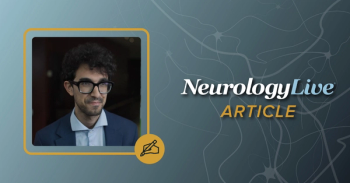
Management of Spasticity Post Stroke, From Stretching to Surgical Options: Harmony Sierens, MD
The medical director of the Inpatient Rehabilitation Unit at Ascension Genesys Hospital explored the various interventions for managing spasticity after stroke, from stretching exercises to surgical procedures. [WATCH TIME: 3 minutes]
WATCH TIME: 3 minutes
"We have to weigh the risk and benefits of management, considering interventions like stretching, monitoring, and bracing before delving into more aggressive measures such as oral medications or botulinum toxin injections. Spasticity is a unique aspect of medicine that requires an artful approach, recognizing that not all instances of spasticity are undesirable; sometimes, it contributes to a patient's ability to stand and walk."
One of the most frequent and disabling clinical manifestations of patients who experience stroke is spasticity.1 In the clinical practice, diagnosis and assessment of spasticity are based on clinical examination, particularly in resistance to passive movement and abnormal involuntary muscle contraction. For managing this condition, nonpharmacologic and pharmacologic treatments are commonly combined with stretching approaches. According to a review of a study published in Physical Medicine and Rehabilitation Clinics of North America, evidence supports the effectiveness and safety of most medications commonly used to treat spasticity.2
The most frequent type of medications used to manage spasticity are taken orally, which some clinicians consider a more conservative or first-line strategy for treatment.3 Regarding the use of oral medications, researchers noted that the decision to prescribe them to patients is complicated further by the fact that several different agents have been used for many different specific diagnoses. If medications or nonpharmacological therapies work for the patient, there is also the option of surgical treatment. These procedures aim at reducing spasticity by interrupting the stretch reflex or attempting to increase the centrally mediated inhibitory influence on the pool of motor neurons.4
To dive deeper into this,
REFERENCES
1. Gomez-Cuaresma L, Lucena-Anton D, Gonzalez-Medina G, Martin-Vega FJ, Galan-Mercant A, Luque-Moreno C. Effectiveness of Stretching in Post-Stroke Spasticity and Range of Motion: Systematic Review and Meta-Analysis. J Pers Med. 2021;11(11):1074. Published 2021 Oct 24. doi:10.3390/jpm11111074
2. Bethoux F. Spasticity Management After Stroke. Phys Med Rehabil Clin N Am. 2015;26(4):625-639. doi:10.1016/j.pmr.2015.07.003
3. Watanabe TK. Role of oral medications in spasticity management. PM R. 2009;1(9):839-841. doi:10.1016/j.pmrj.2009.07.014
4. Smyth MD, Peacock WJ. The surgical treatment of spasticity. Muscle Nerve. 2000;23(2):153-163. doi:10.1002/(sici)1097-4598(200002)23:2<153::aid-mus3>3.0.co;2-4
Newsletter
Keep your finger on the pulse of neurology—subscribe to NeurologyLive for expert interviews, new data, and breakthrough treatment updates.



























